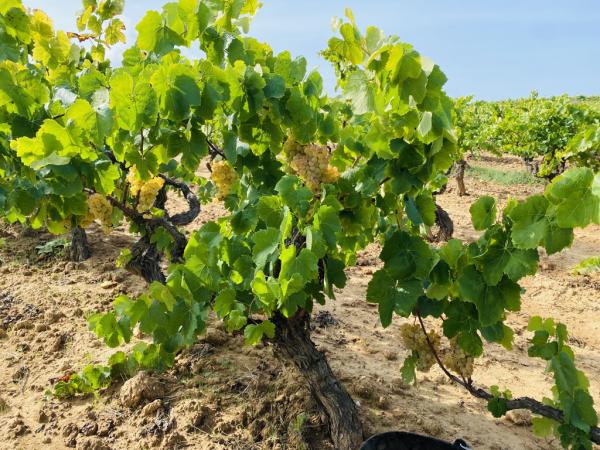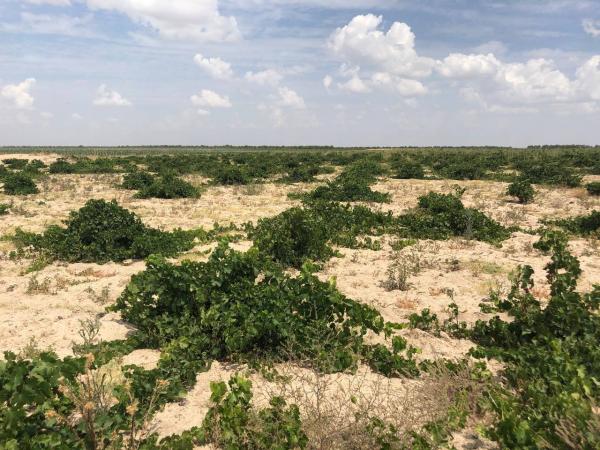Photovoltaics, geo-thermal and aerothermal, green hydrogen, solar heat and biomass are the six forms of renewables that are driving sustainable development at the González Byass Family of Wines.
González Byass generates 2.5 million Kwh a year from 6 sources of renewable energy. What this means for the six wineries that have renewable energy resources is that the output accounts for anywhere between 25 and 60% of all the energy they consume, which in terms of CO2 emissions prevented equates to planting 41,144 trees (a third of the number of trees that were destroyed by storm Filomena in Madrid). González Byass will be continuing to develop the use of renewable energy in order to achieve the target set by the European programmes at those of its sites that where that target has not already been reached. The move also pursues the company’s ambitious “5+5” initiative launched in 2014.
These sources of renewable energy come from the sky and from deep underground. Six forms of clean energy that help lower polluting emissions and greenhouse effect gasses in the areas where they are deployed , namely at González Byass (D.O. Jerez), Beronia (D.O.Ca. Rioja y D.O. Rueda), Viñas del Vero, (D.O. Somontano), Vilarnau (D.O. Cava), Finca Constancia (Vino de la Tierra de Castilla) and the Bodega Las Copas distillery in Tomelloso.
Photovoltaic energy
González Byass has installed 3,000 photovoltaic panels that will produce 1.8 gigawatt hours per year, reducing the wineries’ carbon footprint and generating a positive effect on air quality similar to that of 34,600 trees. This source of energy is already operational at Beronia Rueda, where it will deliver 48% of the winery’s energy requirement, Finca Constancia, Vilarnau, Viñas del Vero and the Bodega Las Copas distillery in Tomelloso. The systems at these five facilities are already up and running and the winery in Jerez de la Frontera will be the next to have a photovoltaic array installed.
Geothermal
The geothermal and thermo-activation system (TABS) installed at the new Beronia winery in D.O. Ca. Rioja has made the building a global point of reference in the wine world. The technology, which delivers clean energy, uses the concrete’s thermal inertia by incorporating a system of pipes into the concrete, through which water flows, cooled or heated according to what is needed at the particular time of year. Part of the circuit is buried in the sub-soil, at a depth of 130 metres so as to make use of the constant temperature there, thus saving on energy costs. This form of energy will save the winery 5.82 Tm of CO2 emissions through heating and 1.8 Tm through cooling.
Green hydrogen
By generating green hydrogen, Viñas del Vero (in Barbastro) has become one of the few locations in Spain to offer a vehicle charging point for this form of energy. It also offers electrical charging points. The winery uses an innovative, sustainable method to generate the hydrogen (gas), using a water hydrolysis technique activated by excess produced by the renewable energy. The hydrogen obtained can drive an agricultural vehicle that is used at Viñas del Vero, that in the future will be developed into a hydrogen tractor, and also saves 156g of CO2 emissions per 100 km driven.
Biomass
Vilarnau has pioneered the use of biomass and as a result no longer uses the fossil fuels it used to (25,000 litres of diesel a year), to generate heat energy for the water circuits used for sterilising bottling lines and materials, cleaning filters, barrels and base wine stabilisers, and the winery’s heating systems. The heating value of biomass is also used at the González Byass winery in D.O. Jerez and at Beronia, in D.O. Rueda.
Solar thermal energy
The González Byass winery in D.O. Jerez and Beronia in D.O.Ca. Rioja are leading the way within this Family of Wines in terms of solar thermal energy generation, a means of obtaining non-polluting heating power to heat the water circuits that are part of the winery’s processes and water used in the plumbing system.
Aerothermal
Bodegas Beronia in D.O. Ca. Rioja is now harnessing the energy contained in the air outside, which it extracts from the atmosphere by means of a system of pumps, to control the temperature of winery’s communal areas.




